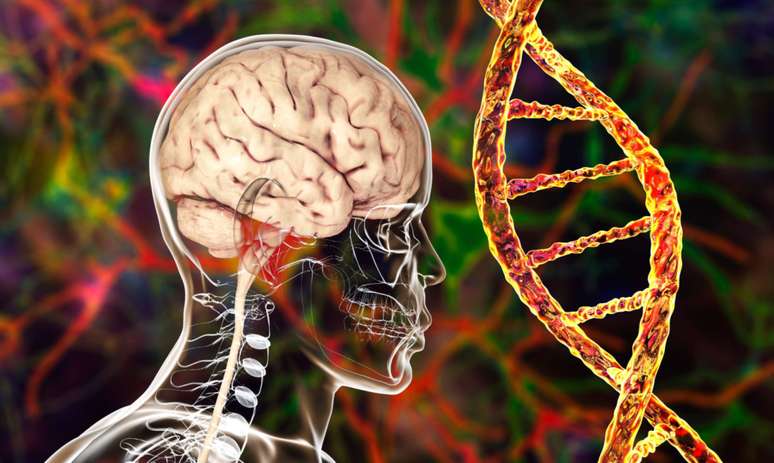By consuming meat contaminated with mad cow disease, humans can contract a deadly neurodegenerative disease
Last Wednesday, 22, the Ministry of Agriculture confirmed a case of Bovine Spongiform Encephalopathy (BSE), better known as Mad Cow Disease, in a property with 160 head of cattle in Pará. The animal showed symptoms and, after confirmation, was slaughtered. Furthermore, the farm is in isolation.
html[data-range=”xlarge”] figure image img.img-eb70fdaec9780a4d6c17dfee3607138dv6dfw7qg { width: 774px; height: 463px; }HTML[data-range=”large”] figure image img.img-eb70fdaec9780a4d6c17dfee3607138dv6dfw7qg { width: 548px; height: 328px; }HTML[data-range=”small”] figure image img.img-eb70fdaec9780a4d6c17dfee3607138dv6dfw7qg, html[data-range=”medium”] figure image img.img-eb70fdaec9780a4d6c17dfee3607138dv6dfw7qg { width: 564px; height: 337px; }
Mad cow disease can be transmitted to humans through the consumption of contaminated meat. Transmission causes a spongiform encephalopathy known as Creutzfeldt-Jakob disease (CJD), a variant of BSE.
What is the risk of mad cow disease in humans?
Agree with the doctor. Fabiano de Abreu Agrela, Post PhD in neuroscience and biologist, the disease is deadly in humans. “In humans, CJD causes a variety of problems, such as personality changes, blindness, loss of memory, balance and coordination, abnormal movements, and progressive loss of mobility and brain function,” he cautions.
This occurs due to the abnormal development of prions in the brain, which generates accumulation points and produces small bubbles in the brain cells, explains the expert. The process leaves the organ with a porous, sponge-like appearance that will gradually affect a number of important functions, followed by the death of the individual.
There are even more dangerous variants of CJD, explains the expert. This is the case, for example, of CJD, which has no symptoms, has an early manifestation and is more transmissible.
“VCJD is also acquired through ingestion of beef or beef products from EBB-infected cattle, but it starts much earlier in humans, at about age 30 or younger. There are people infected with vCJD who remain asymptomatic, which it facilitates its transmission through blood transfusion or surgical procedures”, clarifies Fabiano.
Symptoms of Creutzfeldt-Jakob disease (CJD)
According to the Ministry of Health, there is wide variation in the clinical manifestations of Creutzfeldt-Jakob disease. However, the following symptoms are the most common:
- Brain disorder with memory loss;
- Tremors (in a third of cases);
- Lack of coordination of muscle movements;
- Speech disorders;
- Loss of communication skills;
- Vision loss.
As the disease progresses, people may experience insomnia, depression, unusual sensations, gait disturbances, stiff posture, seizures, and, in addition, facial paralysis. The Ministry of Health also warns that in the case of CJD the decline of the patient’s abilities is much more rapid than in Alzheimer’s disease or other types of dementia.
In the case of vCJD, cases usually occur in young people, who have a rapid decline in brain function. The patient has typically nonspecific psychiatric, behavioral and sensory symptoms in 63% of cases, according to the Ministry of Health. In addition, the following symptoms also occur:
- Weakness or loss of any of the senses;
- Numbness or tingling sensation in some part of the body;
- Depression;
- Anxiety;
- Psychosis;
- Auditory or visual hallucinations;
- Abstinence;
- shaking;
- Irritability;
- Insomnia;
- Loss of interest;
- Forgetfulness.
Mad cow disease: diagnosis and treatment
The diagnosis of Creutzfeldt-Jakob disease in humans is made through a blood test. Unfortunately, medicine still doesn’t know how to treat CJD. According to the Ministry of Health, about 90% of people die within a year. Currently, the recommended treatment is basically support and control of complications.
Source: Terra
Ben Stock is a lifestyle journalist and author at Gossipify. He writes about topics such as health, wellness, travel, food and home decor. He provides practical advice and inspiration to improve well-being, keeps readers up to date with latest lifestyle news and trends, known for his engaging writing style, in-depth analysis and unique perspectives.






![A Better Life Preview: What’s in store for Tuesday, October 21, 2025 Episode 446 [SPOILERS] A Better Life Preview: What’s in store for Tuesday, October 21, 2025 Episode 446 [SPOILERS]](https://fr.web.img6.acsta.net/img/fe/c7/fec79870332faf9ba9cf244248ec57c8.jpg)


